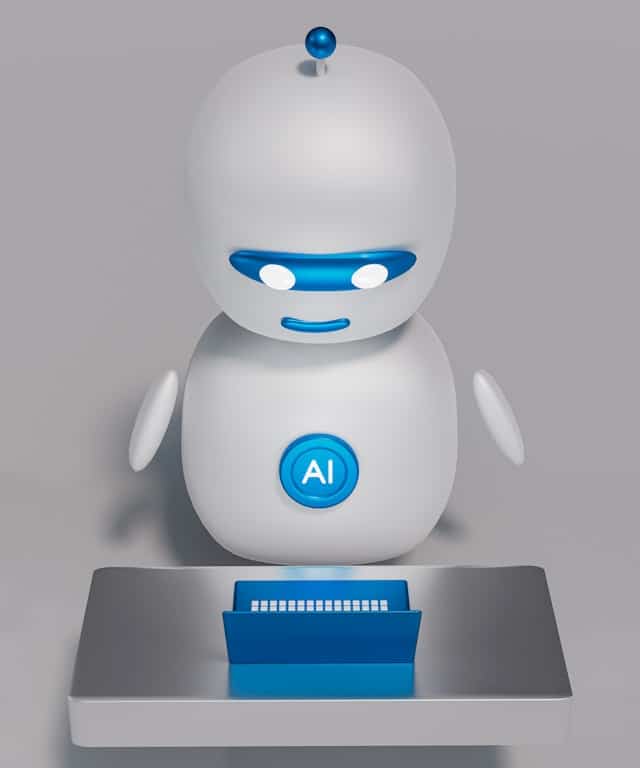Manufacturing is the backbone of our modern society, comprising a vast world of machines, equipment, and complex systems that create everything from automobiles to zippers. Any downtime in this buzzing environment can lead to massive costs, lost time, and a decrease in production efficiency. In the quest to minimise downtime and improve efficiency, the manufacturing industry is increasingly turning to predictive maintenance. The secret sauce behind this trend? Machine learning.
The Rise of Predictive Maintenance
When you think of maintenance, you may picture a scene of a mechanic wielding a wrench after a machine has broken down. But in reality, the maintenance landscape has evolved significantly. We’re moving away from reactive maintenance (where repairs happen after a failure) and preventive maintenance (where parts are replaced on a set schedule whether they need it or not), to predictive maintenance.
A découvrir également : How Can Smart Cities Reduce Their Carbon Footprint Effectively?
Predictive maintenance techniques anticipate equipment failures before they occur. The system keeps a watchful eye on your machines, identifying warning signs of potential failures. It leverages data and real, in-depth machine learning models that can predict the future, allowing manufacturers to address issues before they become expensive problems, leading to an overall decrease in maintenance costs and downtime.
The Role of Machine Learning in Predictive Maintenance
So how does predictive maintenance work? The answer lies in the power of machine learning. Machine learning is a subset of artificial intelligence where algorithms learn from data, recognize patterns, and make decisions with minimal human intervention.
Sujet a lire : What Are the New Frontiers in Virtual Reality for Pain Management?
In the context of predictive maintenance, machine learning algorithms analyze vast amounts of data collected from manufacturing equipment. This data might include temperature readings, vibration levels, power consumption, and many other parameters. Over time, the algorithms learn which patterns of data suggest that a piece of equipment is about to fail.
Machine learning brings a lot to the predictive maintenance table. It not only identifies potential failures but also pinpoints the exact components that are likely to fail. This precision enables manufacturers to perform targeted maintenance, saving both time and resources.
How Companies Implement Predictive Maintenance
Implementing predictive maintenance powered by machine learning is not a one-size-fits-all solution. Each manufacturing company will need to customize their approach based on their specific needs and the types of equipment they use.
Firstly, companies need to install sensors on their equipment to collect real-time data. The collected data is then fed into machine learning algorithms, which are trained to recognize patterns linked to equipment failure.
Manufacturers can make use of existing machine learning models or develop their own algorithms tailored to their specific needs. After the models have been fine-tuned, they are ready to monitor the equipment and alert the maintenance team to potential issues.
The Impact of Predictive Maintenance on the Manufacturing Industry
Predictive maintenance is not just a fancy buzzword; it is revolutionizing the manufacturing industry. By harnessing the power of machine learning, manufacturers are substantially reducing downtime and maintenance costs, while also extending the life of their equipment.
Predictive maintenance also has the potential to improve worker safety. With these systems in place, dangerous failures can be prevented before they occur, reducing the risk of accidents. Plus, the use of machine learning allows for remote monitoring of equipment, minimizing the time workers need to spend in potentially hazardous areas.
Despite the considerable benefits, transitioning to a predictive maintenance model does require an investment in time and resources. Companies need to implement sensors, develop or adapt machine learning models, and train personnel to interpret the system’s predictions. However, the upfront investment can pay off handsomely in the long run, as predictive maintenance can lead to significant savings in maintenance costs and downtime.
In the face of such compelling benefits, it’s clear that the manufacturing industry’s future will be increasingly intertwined with machine learning and predictive maintenance.
The Power of Real-Time Data in Predictive Maintenance
The cornerstone of any predictive maintenance strategy is the reliance on real-time data. The power of predictive maintenance lies in its ability to utilize ongoing data streams from manufacturing equipment to identify potential equipment failures before they happen. In this sense, how well the predictive maintenance system performs depends largely on the quality, quantity, and freshness of the data it has access to.
Modern manufacturing machines are often equipped with a range of sensors, which continuously monitor various parameters such as temperature, vibration, and power consumption. These sensors generate massive amounts of real-time data, which can then be fed into machine learning algorithms. As these learning algorithms analyze this continuous stream of data, they can begin to understand typical patterns and identify any deviations that may suggest an upcoming failure.
The use of real-time data also aids in decision making. Rather than relying on past data or intuition, maintenance teams can make evidence-based decisions about when and where to perform maintenance activities. This greatly enhances the operational efficiency of maintenance strategies and reduces unnecessary downtime.
However, the true value of real-time data in predictive maintenance comes from its ability to enable proactive maintenance. Instead of reacting to equipment failures after they have occurred, maintenance teams can identify and address issues in advance, minimizing disruption and maximizing production uptime.
Conclusion: The Future of Machine Learning and Predictive Maintenance
There’s no doubt that machine learning is revolutionizing predictive maintenance in manufacturing. By enabling a shift from reactive to proactive maintenance, it offers significant cost savings and efficiency improvements. The ability of machine learning algorithms to analyze real-time data and predict equipment failures before they occur is nothing short of transformative.
However, it’s important to remember that implementing a machine learning powered predictive maintenance strategy isn’t a one-time activity. It’s an ongoing process that requires continuous refinement. As machine learning models are fed more data and gain more experience, they become more accurate and reliable. This continuous learning process is what makes machine learning predictive maintenance so powerful and valuable in the long term.
As we look to the future, the influence of machine learning in predictive maintenance is set to grow. With advancements in technology, we can expect to see more sophisticated machine learning models that can handle larger datasets, identify patterns more accurately, and make even more precise predictions.
Furthermore, the rise of Industry 4.0 and the Internet of Things (IoT) will only accelerate this trend. As more devices become interconnected and capable of generating real-time data, the opportunities for machine learning in predictive maintenance will continue to expand.
In conclusion, it’s clear that the future of manufacturing lies in the successful integration of machine learning and predictive maintenance. By embracing this technology, manufacturers can not only improve the quality control of their production processes, but also optimize their maintenance activities, reduce costs, and increase operational efficiency. In other words, machine learning is not just changing the way maintenance is done – it’s redefining the future of the entire manufacturing industry.






